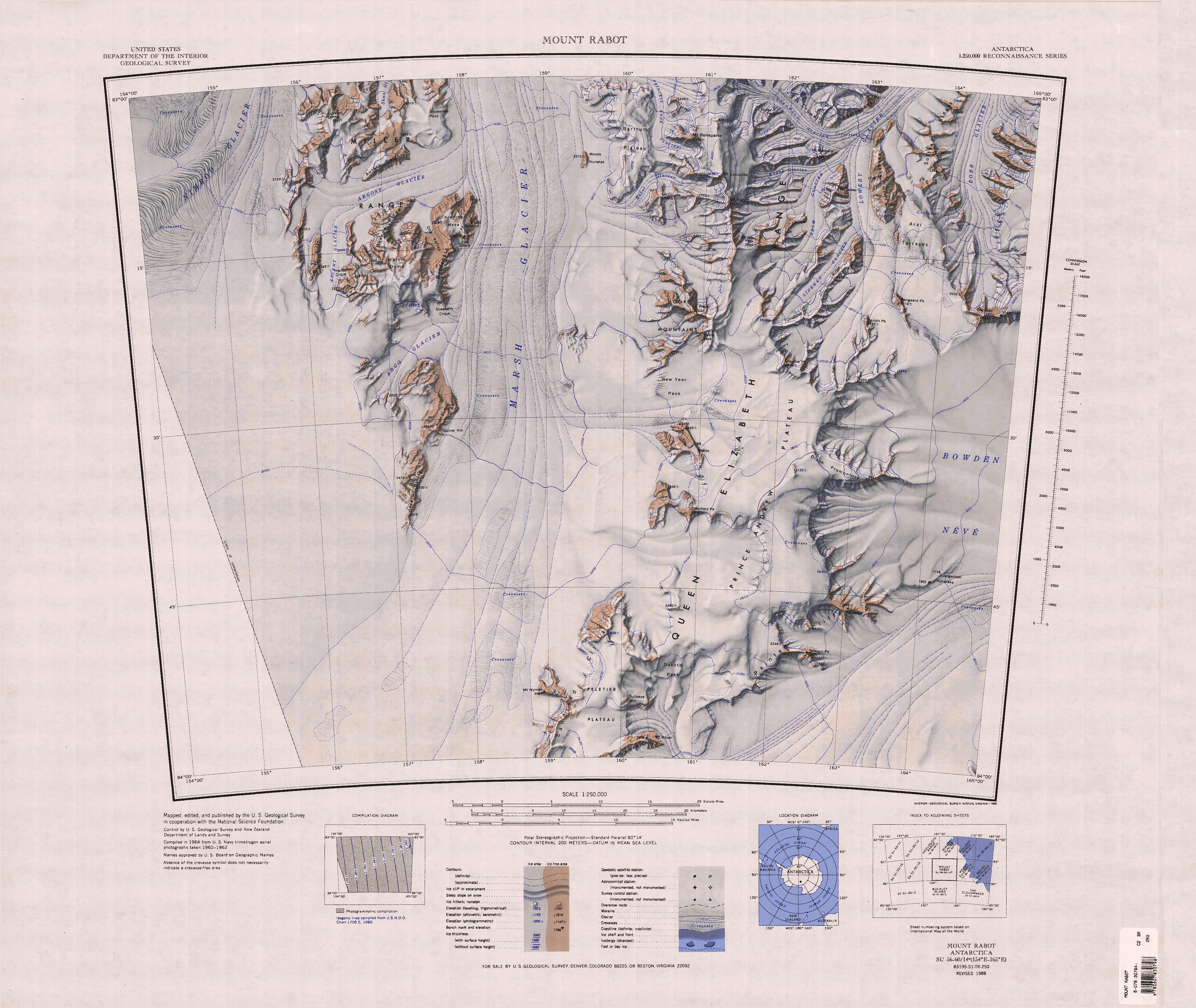Mount Rabot on:
[Wikipedia]
[Google]
[Amazon]
Mount Rabot () is a mountain, high, standing southeast of Mount Lecointe in the Queen Elizabeth Range in Antarctica.
 Mount Rabot is in the center of the Queen Elizabeth Range, to the east of the Marsh Glacier and west of the
Mount Rabot is in the center of the Queen Elizabeth Range, to the east of the Marsh Glacier and west of the
Name
Mount Rabot was discovered and named by the British Antarctic Expedition (BrAE; 1907-09).Charles Rabot
Charles Rabot (26 June 1856 in Nevers − 1 February 1944 in Martigné-Ferchaud) was a French geographer, glaciologist, traveler, journalist, lecturer, translator, and explorer. He was also the first person to climb Kebnekaise, the tallest mountai ...
was editor of ''La Géographie'', bulletin of the Société Geographique, Paris, and was an outstanding glaciologist of that period.
Location
 Mount Rabot is in the center of the Queen Elizabeth Range, to the east of the Marsh Glacier and west of the
Mount Rabot is in the center of the Queen Elizabeth Range, to the east of the Marsh Glacier and west of the Helm Glacier Helm Glacier () is a glacier, long, flowing north to enter Lowery Glacier just west of the Fazekas Hills, in the Queen Elizabeth Range of Antarctica. It was named for Arthur S. Helm, former Secretary of the Ross Sea Committee, by the New Zealan ...
.
The Moore Mountains and Prince Andrew Plateau are to the south.
Markham Plateau is to the north.
Features near Mount Rabot include Solitary Peak to the south, Mount Counts and Rabot Glacier
The Marsh Glacier () is a glacier about 110 km (70 mi) long, flowing north from the Antarctic polar plateau between the Miller Range and Queen Elizabeth Range into Nimrod Glacier. Seen by a New Zealand
New Zealand ( mi, Aotear ...
to the west, Moody Nunatak, Bartrum Plateau and Mount Bonaparte to the northwest, Mount Lecointe to the north, Fopay Peak and Mount Macbain to the northeast.
Features
Solitary Peak
. A peak high located southeast of Mount Rabot. An important geologic section was measured on the feature by the Ohio State University Geological Party, 1967-68, which suggested the name because of the peak's relative isolation.Mount Counts
. A sharply pointed peak on the east side of Marsh Glacier marking the termination of the spur running west from Mount Rabot. Named by theNew Zealand Geological Survey Antarctic Expedition The New Zealand Geological Survey Antarctic Expedition (NZGSAE) describes a series of scientific explorations of the continent Antarctica. The expeditions were notably active throughout the 1950s and 1960s.
Features named by the expeditions 1957 ...
(NZGSAE; 1961-62) for Lieutenant Commander William D. Counts, United States Navy, pilot on reconnaissance flights, killed in a Neptune plane crash at Wilkes Station in November 1961.
Moody Nunatak
. A prominent isolated nunatak at the east side of Marsh Glacier, west of Bartrum Plateau. Named by the NZGSAE (1964-65) for Lieutenant D.M. Moody, pilot with United States Navy Squadron VX-6, who flew the southern party of NZGSAE in and out of the field.Bartrum Plateau
. An ice-covered plateau, long and wide, standing west of Mount Bonaparte. Named by the Northern Party of the NZGSAE (1961-62) for geologist, Professor John Bartrum of Auckland University College.Mount Bonaparte
. A mountain, high, standing northwest of Mount Lecointe. Discovered by the BrAE (1907-09) underErnest Shackleton
Sir Ernest Henry Shackleton (15 February 1874 – 5 January 1922) was an Anglo-Irish Antarctic explorer who led three British expeditions to the Antarctic. He was one of the principal figures of the period known as the Heroic Age of ...
, and named for Prince Roland Bonaparte
Roland Napoléon Bonaparte, 6th Prince of Canino and Musignano (19 May 1858 – 14 April 1924) was a French prince and president of the Société de Géographie from 1910 until his death. He was the last male-lineage descendant of Lucien Bonaparte ...
, President of the Geographical Society of Paris.
Mount Lecointe
. A conspicuous mountain, high, located northwest of Mount Rabot. Named by the BrAE (1907-09) for Lieutenant Georges Lecointe, who was second in command of the BelgAE (1897-99) under Gerlache.Fopay Peak
. A peak northwest of Mount Macbain, on the south side of Cornwall Glacier. Named by the United States Advisory Committee on Antarctic Names (US-ACAN) for Charles F. Fopay, Weather Central Meteorologist at Little America V, 1958.Crowell Buttresses
. A series of high snow and rock buttresses, long, forming the north wall of Cornwall Glacier for a distance of and then trending northeast an equal distance along the west side of Lowery Glacier. Named by US-ACAN after John T. Crowell (d. 1986), who served with the National Science Foundation as Antarctic Vessel Project Officer, 1960-63, and Special Projects Officer, 1963-69. He led a reconnaissance party to the Antarctic Peninsula in January 1963 to investigate the location for a U.S. station in the peninsula area.Mount Macbain
. A prominent mountain, high, standing between the mouths of Cornwall Glacier and Helm Glacier. Named by the US-ACAN for Commander Merle Macbain, United States Navy, Public Information Officer, United States Naval Support Force, Antarctica, during United States Navy OpDFrz III and IV, 1957-58 and 1958-59.References
Sources
* * *{{Include-USGov , agency=United States Geological Survey Mountains of the Ross Dependency Shackleton Coast